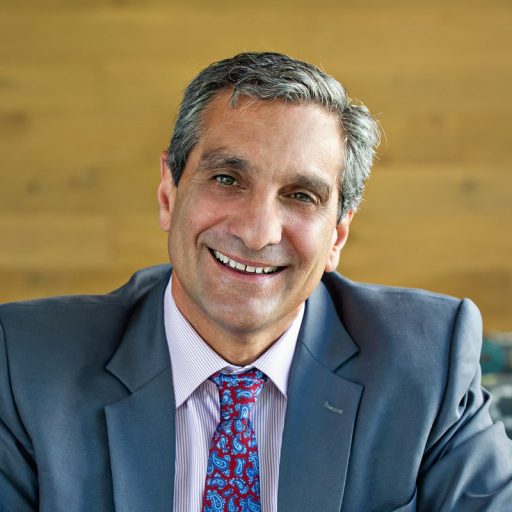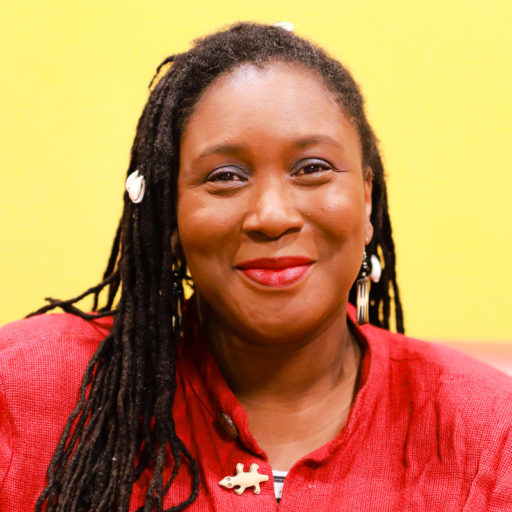As we reflect on our past and plan for our future, it is imperative that we acknowledge the critical role of diversity, equity, and inclusion in all that we do.

To the Greenhills Community:
A strategic plan for Greenhills School must include coordinated and sustained action steps to advance equity and inclusion at Greenhills and build upon the previous work of many individuals in our community. Leading our efforts is the Office and Diversity and Inclusion, the work of which has included the facilitation of professional development and the coordination of compelling speakers, student and faculty participation at the NAIS People of Color Conference and Student Diversity Leadership Conference, and the establishment of faculty-supported student affinity groups, which provide a majority experience for students who are often in the minority at school. Concurrently, parents of those students have met together and with the Head of School and administration. In the past year Greenhills hosted anti-bias training for independent schools in Michigan with facilitators from Nemnet Minority Recruitment and sent members of our administrative team to specific hiring conferences with a focus on supporting and hiring educators from marginalized communities. These are but a handful of examples of the work we have done and must build upon.
Every year Greenhills has committed to equity and inclusion, and every year we have taken stock of our failures and successes. One of our failures has been to not make any of that visible to the greater community, particularly to our alumni. Part of our strategic plan will undoubtedly involve regular communication about the work we are doing and the progress we are making.
In addition to updating our community, we need to do more to effect a cohesive, mission-driven vision for equity and inclusion. We begin this first phase by acknowledging that structural racial inequality is built into our nation; as an educational institution valuing diversity and equity we must educate all members of our community of this history of racial injustice, and enlist them in the work of dismantling systems of oppression in our school and communities. As the scholar and author Michelle Alexander recently wrote, “We must face our racial history and our racial present. We cannot solve a problem we do not understand.”
Thank you for joining us in this partnership.
Peter B. Fayroian Head of School(He/Him/His)
OFFICE OF DIVERSITY AND INCLUSION
Mission: The promotion of diversity is essential to the ethos and practices of Greenhills School. We believe that people from all races, cultures, socio-economic backgrounds, genders, abilities, religions, and sexualities are sources of strength that enrich teaching and learning. We strive to build a diverse learning community by actively valuing individual experiences, ideas, and talents.
Leadership
 Nadine Hall
Director of Diversity, Equity, and Inclusion
Nadine Hall
Director of Diversity, Equity, and Inclusion (She/Her/Hers)
 Kelly Williams
Associate Director of Diversity, Equity, and Inclusion; Teacher
Kelly Williams
Associate Director of Diversity, Equity, and Inclusion; Teacher (She/Her/Hers)
Inclusion Council
The Inclusion Council will offer grounded perspectives on how inclusion, diversity and equity—inherent in the relationships, practices, and activities of students, staff and faculty—are playing out at Greenhills. The members of the council will advise the director of diversity and inclusion and the head of school on what’s working well and how the school can improve. Over the coming months, the Council will set priorities and develop a communications plan to articulate its implementation and progress.
Membership
At this time, the membership of the Inclusion Council includes faculty members and administrates from across the various arenas of school life. It’s important that the membership of the council includes perspectives from multiple stakeholders and reflects voices from all departments and divisions. Eventually, we will look to include students and alumni in this group.
- Charles Dershimer, Science Department Chair
- Neil Donato, Fine and Performing Arts Chair
- Danielle Ellis, English Teacher
- Eric Gajar, Assistant Director of Admission, Math Teacher
- Jenniffer Gray, Spanish Teacher
- Marissa Green, Director of Information Technology Services
- Peggy Hubbard, English Teacher
- Karin Scott, 6th Grade Team Leader, Social Studies Teacher
- Deano Smith, Dean of Academics, Science Teacher
- Tom Ward, Dean of Students, Math Teacher
- Kelly Williams, Associate Director of Diversity and Inclusion, English Teacher
- Caroline Huntoon, Head of Middle School, Co-Chair/Agenda Officer
- Quincy McLaughlin, Associate Head of School, Co-Chair/Agenda Officer
- Peter Fayroian, Head of School, Ex Officio
- Nadine Hall, Director of Diversity and Inclusion, Ex Officio
BUILDING A STRATEGIC PLAN & FRAMEWORK FOR ENGAGEMENT
Greenhills seeks to foreground how diversity, equity, and inclusion impact all areas of our school with a goal of developing a robust and comprehensive strategic plan focused on diversity, equity, and inclusion by the end of the 2020-2021 academic year. This strategic plan, which will require us to identify goals, action steps, and methods of measurement and accountability, will be backed by the Head of School and the Board of Trustees; built by the Inclusion Council; and carried out by the entire Greenhills community.
Areas of Focus
The Head of School and Inclusion Council have identified five areas that will serve as initial focal points as we develop our strategic plan. These areas inform and connect with each other in important ways.
-
School Climate and Feedback
Our School’s mission, which puts students at the center of our work and reinforces our commitment to creating a respectful community that celebrates differences, requires that we support all of our students as they grow into new versions of themselves. We seek to ensure cultural competence and anti-racist culture among trustees, faculty and staff, and students through continued training; and to promote accountability around community behavior and values. We will develop and communicate a clear protocol for reporting and responding to bias incidents.
Inclusion Council Subcommittee Members: Marissa Green, Quincy McLaughlin, Tom Ward, Kelly Williams
-
Faculty & Student Recruitment and Retention
We must actively cultivate a diverse community—within our faculty and staff and our student population. This requires that we recruit, support, and retain faculty, staff, and students who identify with historically under-represented groups. To maintain a diverse and inclusive community, we will actively promote a culture that encourages honest and sincere communication and reflection, and the ability to participate in dialogues around complicated topics. We will continue to expand our hiring network.
Inclusion Council Subcommittee Members: Charles Dershimer, Eric Gajar, Marissa Green, Quincy McLaughlin
-
Academics and Curriculum
At the core of our work at Greenhills is our academic program. It is critical that we form a curricular backbone that supports Greenhills’ commitment to inclusion and combating racism. This requires us to audit our courses and implement plans for curricular and pedagogical changes that promote culturally responsive teaching and reality pedagogy, with a focus on decentering whiteness, promoting social justice, and espousing anti-racism in order to cultivate belonging for all students. Faculty will create regular opportunities for class-specific feedback that validates student experiences and allows for real-time instructional revision.
Inclusion Council Subcommittee Members: Neil Donato, Jenniffer Gray, Peggy Hubbard, Karin Scott, Deano Smith, Kelly Williams
-
Requirements and Infrastructure
We know that our work to promote diversity, equity, and inclusion will only be successful if we can effectively shift our school’s foundational systems. To support this work, we will identify key concepts and competencies related to diversity, equity, and inclusion that students must develop over the course of their middle school and upper school experiences, and consider where and how these will be learned and assessed. We also seek to audit our policies and processes to reduce bias and increase accountability and action. Additionally, we will provide educational opportunities to Trustees to support Board leadership in anti-racist action and create a DEI committee on the Board of Trustees.
Inclusion Council Subcommittee Members: Jenniffer Gray, Peggy Hubbard, Deano Smith, Tom Ward
-
Engagement and External Facing Offices and Teams
While we seek to cultivate a particular experience within Greenhills School, we know that we are ultimately preparing our students to enter a wider world. The school needs to consider how it engages with our external community and integrates school values around diversity, equity, and inclusion into all of those interactions. Alumni and families play a critical role in supporting our community, and we will make space for their engagement with our work.
Inclusion Council Subcommittee Members: Danielle Ellis, Eric Gajar, Caroline Huntoon, Quincy McLaughlin
ACCOUNTABILITY
We recognize the urgent need to develop and enact a strategic plan around diversity, equity, and inclusion. In order for this work to be effective, we must design a plan that allows for sustainable, long-lasting change. We look to our entire community to join us in this work and to hold us accountable. Here is what you should expect from us in the coming months.
Regular Progress Updates
As the Inclusion Council develops our strategic plan, we will keep you informed of our work. The Council will write and share quarterly reports with the full Greenhills community. Additionally, we will be organizing a series of facilitated meetings to discuss our work in diversity, equity, and inclusion.
Opportunities for Engagement
We will ask for community feedback in order to accurately assess how we should prioritize our strategic plan and to assess the progress we are making. Additionally, we will reach out with specific opportunities for current students, alumni, and parents to engage with this work as members of committees—such as an alumni advisory group—and for individuals to connect in groups related to diversity, equity, and inclusion.
Sharing Our Vision
By the end of the 2020-2021 academic year, we will publish our strategic plan for the full Greenhills community. By no means will our work stop there. When our strategic plan is in place, we will invite you all to continue this work with us.
First Wave Recommendations
Throughout the fall, all five subcommittees met regularly and collected information from across the school to assess the current strengths and needs of Greenhills with respect to diversity, equity, and inclusion. The full Inclusion Council met three times to share out about subcommittee findings and determine goals for the coming year. In early October, the Inclusion Council presented a series of first wave recommendations to Head of School Peter Fayroian and Director of Diversity and Inclusion Nadine Hall for review. Those recommendations have been reviewed and accepted by the Head of School and the Director of Diversity, with a target completion date of January 2021. They are:
Bias Response
Implement a new bias response process with specific, clear, and multi-modal procedures that validate the experiences of students.
Climate Survey
Determine the best instrument for surveying our community and thoughtfully develop a timeline for implementation. Specifically, consider timing in conjunction with COVID-19 and our ISACS accreditation timeline.
Faculty Reflection
Incorporate the following questions into the faculty portfolio assessment tool to allow for regular self-reflection and adjustment within our teaching practices:
- What professional development opportunities and/or readings have I engaged with that relate to antiracism in general or within my subject area in particular?
- What have I learned this year in relation to diversity, equity, and inclusion that is new to me?
- What was a missed opportunity where I could have done something differently and what will I do next time?
- What are two examples of antiracist practices that I have incorporated into my pedagogy/lesson plans/learning activities?
- What are two examples of actions that I’ve taken that show consideration for marginalized students?
- How am I helping my students develop equity literacy?
- What are two examples of decentering whiteness and/or espousing antiracism in my curriculum?
- What do I have on my classroom walls and/or my Gryphon page that promotes an inclusive environment for students?
- How are my grading practices equitable?
Regular Communication
In conjunction with the communications team, develop a clear and transparent model for keeping our community informed of our efforts.
Community Engagement
Schedule and plan a Community Chat that focuses on our DEI work. (Note: This event is scheduled for December 14th. Please join us.)
Recruitment and Retention
Compile and catalogue current practices, pathways, training, and systems that support the recruitment and retention of faculty and students of color.
Revise Handbook
Audit and revise the handbook to amplify the school’s commitment to becoming an anti-racist institution.
Director of Admission Search
While searching for the next Director of Admission, continue to explicitly and visibly invite talented applicants from underrepresented populations to intentionally expand our diversity recruitment efforts.
Next Steps
Over the coming months, the Inclusion Council will partner with the Head of School and the Office of Diversity and Inclusion to enact these recommendations. Our next progress update in January will include reflections on this first wave of recommendations along with a report of our second wave of recommendations.
This plan is a work in progress, and we value input from our community.
Share Your Comments

